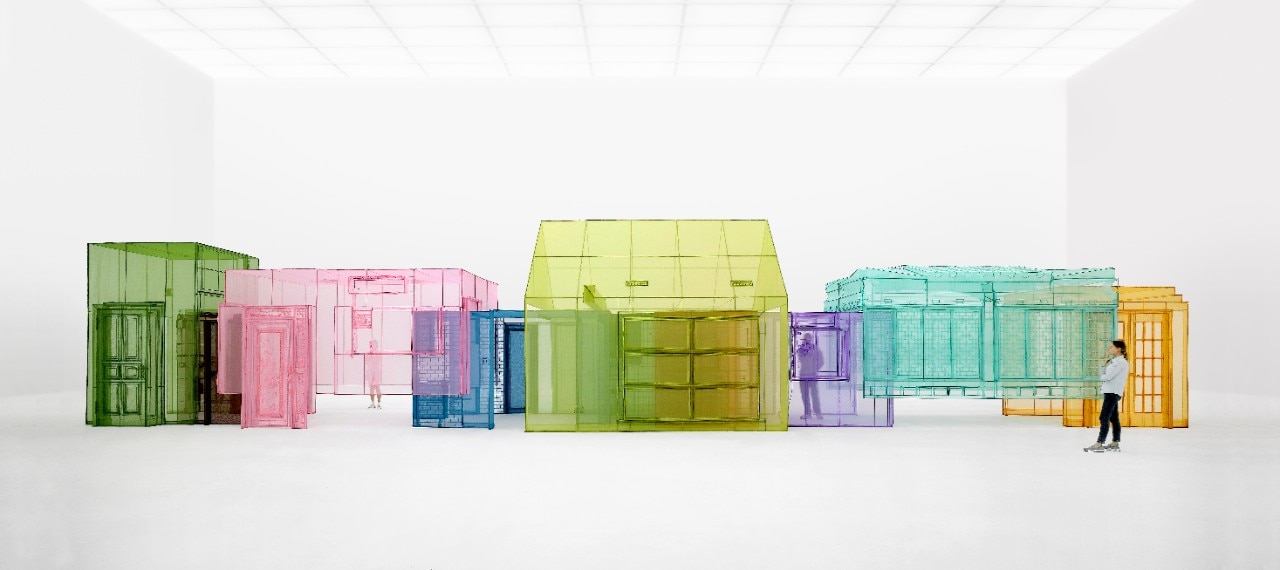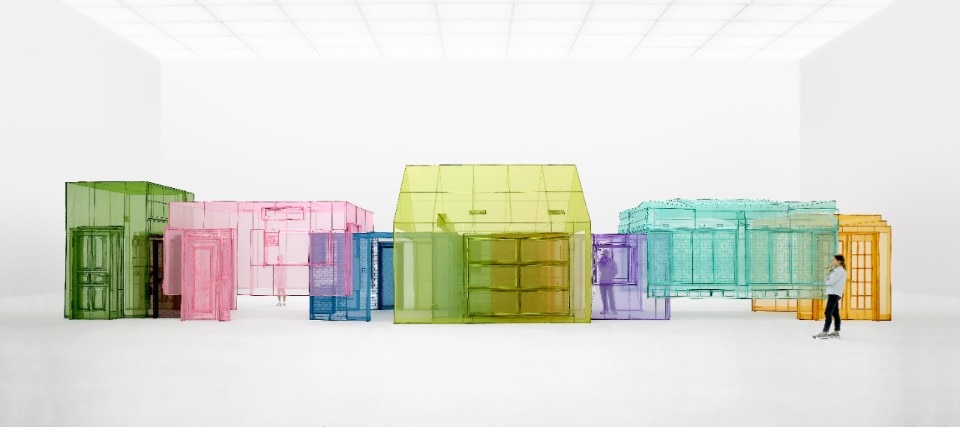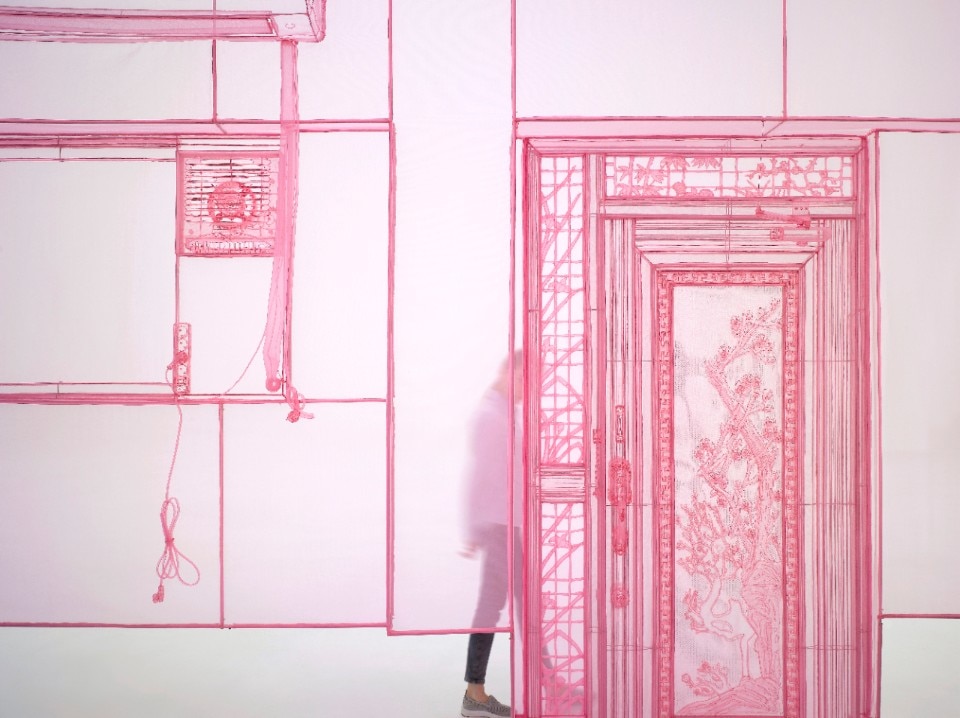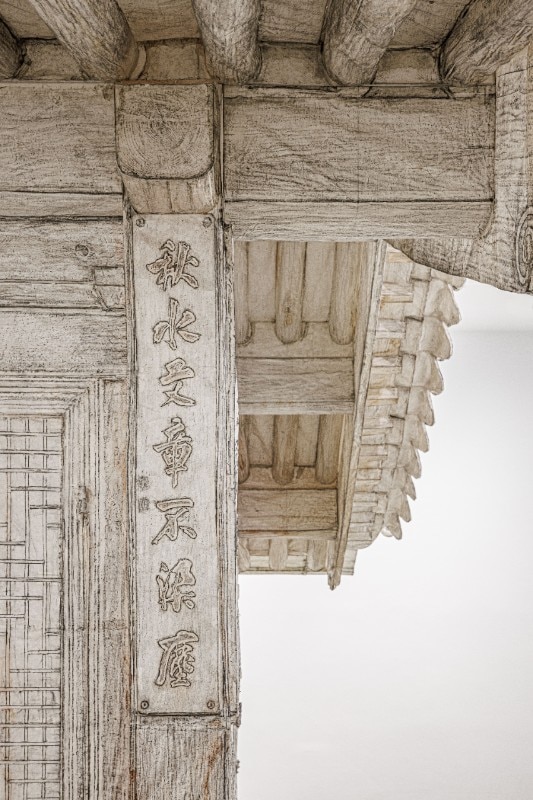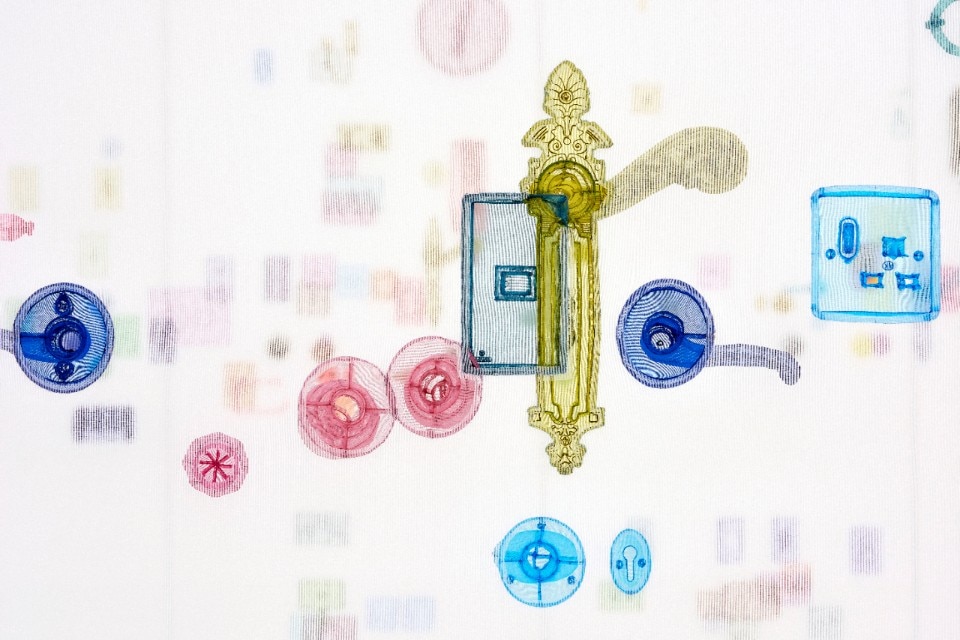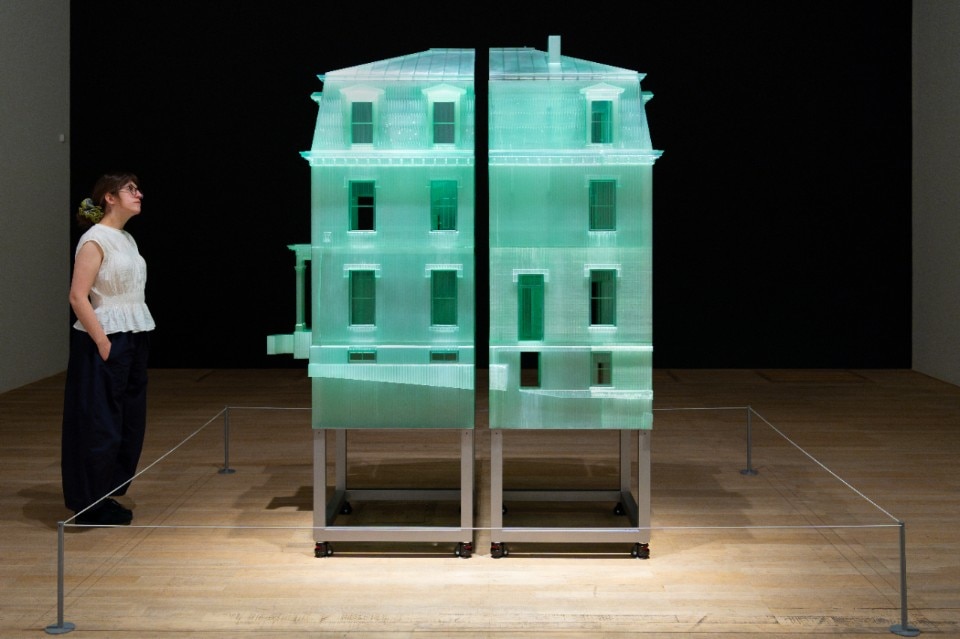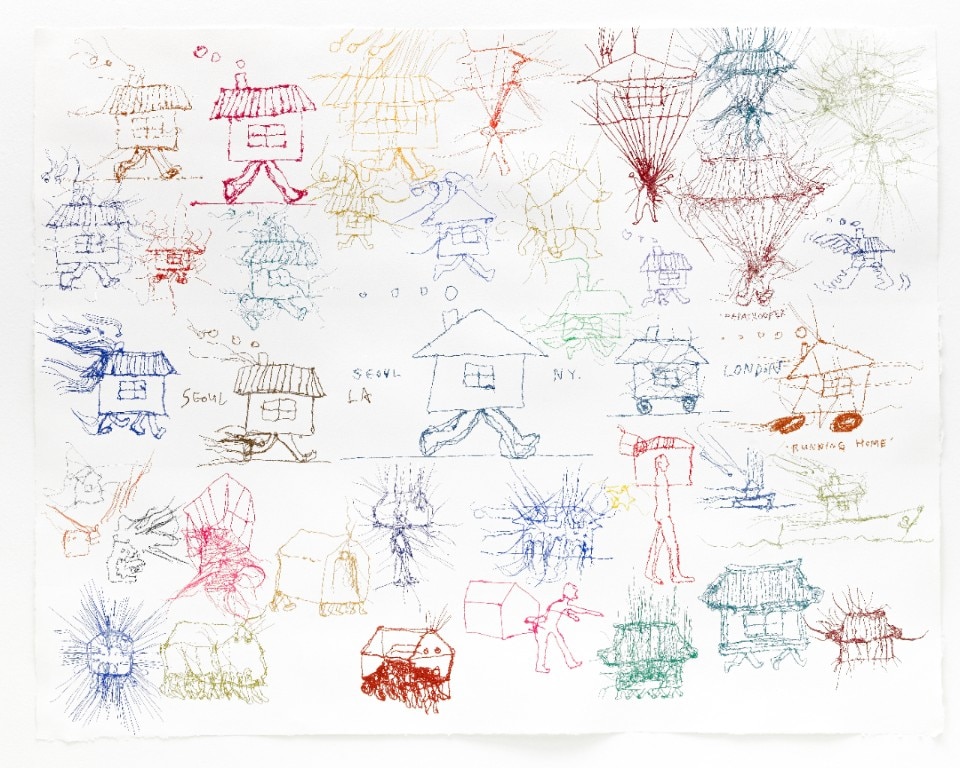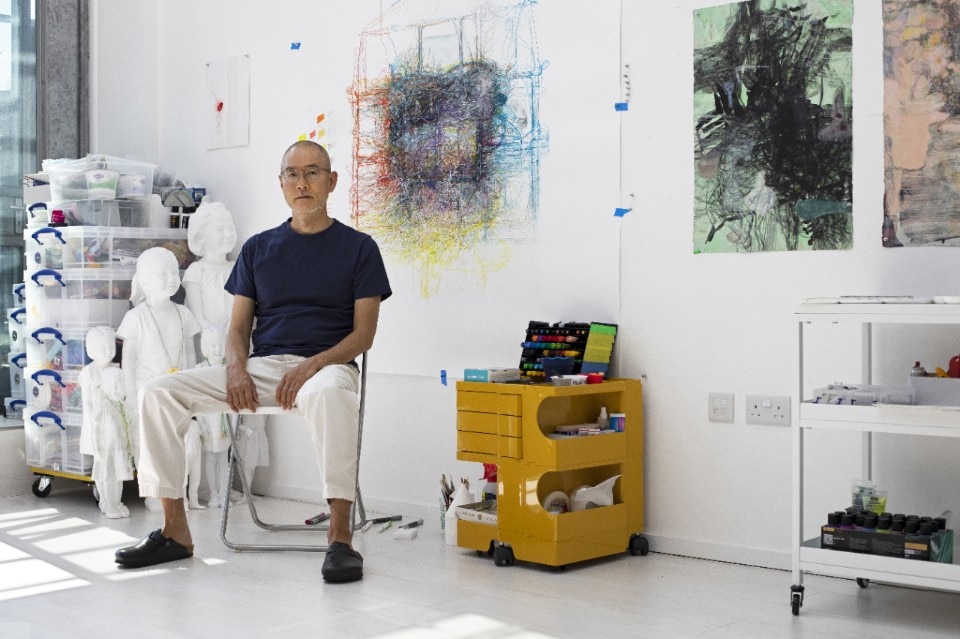It is in dwelling that the essence of human beings lies, wrote Martin Heidegger in his "Bauen, Wohnen, Denken" (Building, Dwelling, Thinking) in 1951. But in an age where homes are shared among strangers, work is done remotely, mobility is the norm – extending to digital nomadism – while living spaces become increasingly small, housing costs rise everywhere, and stability seems a privilege for the few, what truly remains of the concept of home?
It is from these questions that the exhibition "The Genesis Exhibition: Do Ho Suh: Walk the House", currently on view at Tate Modern in London until October 19, 2025, takes shape: an extensive retrospective dedicated to the work of Do Ho Suh, an artist born in Seoul in 1962 and now based in London, who has been exploring the idea of home for over thirty years — as a biographical, emotional, but also cultural and political space. His transparent architectures, monumental frottages, and embroidered drawings gathered here become an atlas of lived experience, a way of narrating time through space:
"I like introducing domestic interlopers into museum architecture and at Tate, we are using one, big open space for most of the work, which includes new installations that I’ve been thinking about and working on for many years. For me, 'Walk the House' holds many different times, localities and histories – personal, collective and socio-historical. I could only have made this show at this moment in time, and in this place."
I could only have made this show at this moment in time, and in this place.
Do Ho Suh
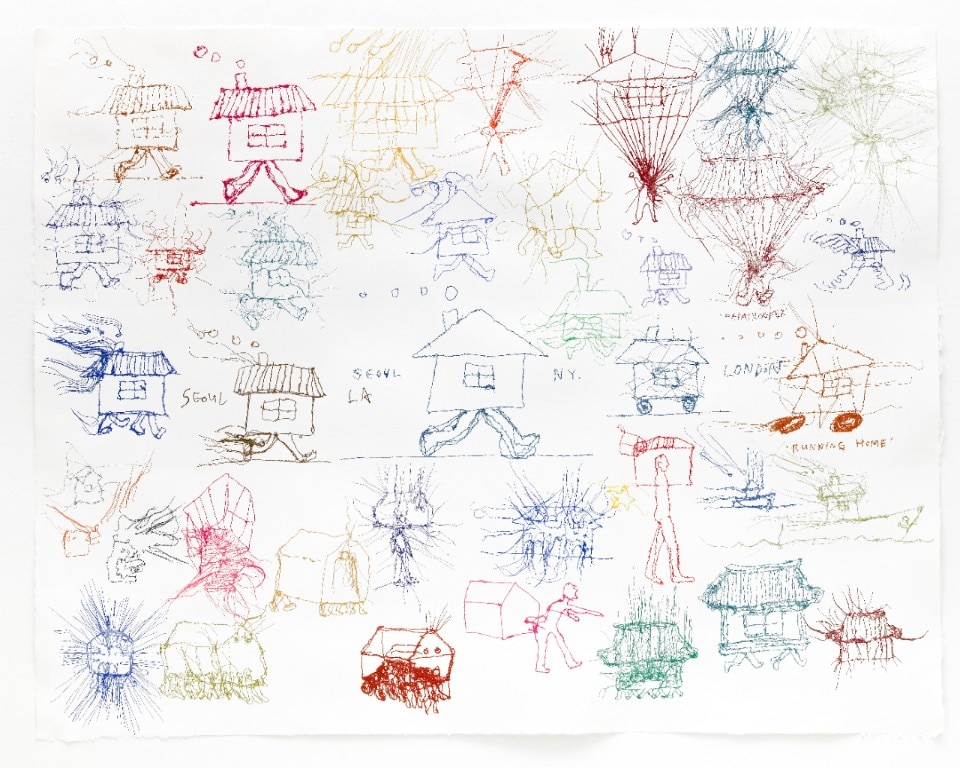
The mobile roots of the hanok
Do Ho Suh’s childhood took place in a hanok, the traditional Korean house built by his father — the painter Suh Se-ok — in Seoul. The building, reinterpreted in a contemporary key, took shape as a modular complex made up of five structures, including a hall inspired by the royal palace rooms of King Sunjo, a monarch of the Joseon dynasty.
The hanok is not only an architectural typology but a cultural and environmental vision: built with natural materials, it reflects a principle of balance between the human being and the landscape. Dismantlable, breathable, and adaptable, it stands in radical contrast to the schemes of postwar urbanization, which between the 1950s and 1970s transformed Seoul into a vertical expanse of concrete and standardization.
While Suh was growing up in this hybrid house between tradition and design, the city around him was changing at a dizzying pace. After liberation from Japan and the Korean War, the South Korean capital became the epicenter of an aggressive modernization process: large-scale demolitions, historic neighborhoods sacrificed for massive prefabricated complexes, centralized planning, and real estate speculation. From 1960 to 1990, the population tripled, and with it, a significant part of urban memory disappeared. Suh’s works seem to arise precisely as a silent response to this architectural erasure.
“When I was living in Seoul, the concept of home didn’t exist: it only started to exist when I left home and went elsewhere,” the artist recalls. It was at that moment that he began to question what truly remains of a home once it is left behind.
A question that takes shape in the work "Rubbing/Loving: Seoul Home" (2013–2022), in which Suh returns to his childhood home to create a paper cast of it through a “ritual rubbing” with graphite: “It was not a performance, but there was a deeply moving sense of ritual, or commemoration, that came from doing things together.”
I’ve moved around so much in my life that the notion of home has become very complicated and cumulative.
Do Ho Suh
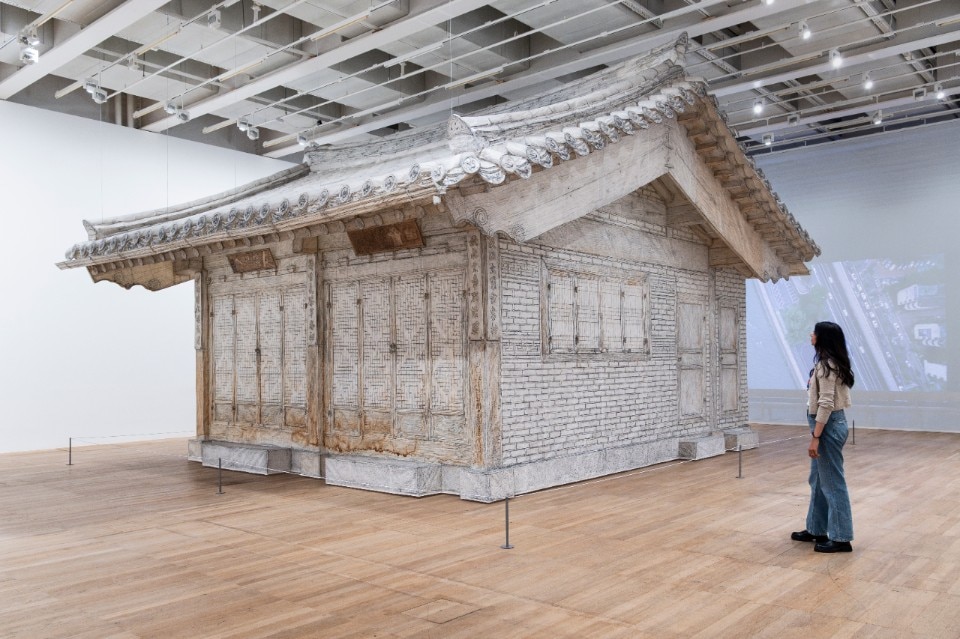
The apartment as an extension of the body
In the late 1990s, New York was undergoing a phase of accelerated gentrification, particularly in central Manhattan neighborhoods. The Chelsea area, where Do Ho Suh’s apartment was located, was in full transformation: from a mixed industrial and residential district to a new epicenter of contemporary art and high-end real estate. In this context, the act of mapping every detail of his living space takes on, for the artist, a form of intimate resistance to urban change.
Suh’s move to the United States in 1991 marked the beginning of a deep reflection on domestic space and identity. But it was especially from 1997, when he settled in New York, that this reflection materialized into an artistic practice. His apartment at 348 West 22nd Street became the subject of a meticulous process of measurement and reproduction. He created versions in fabric and rubbings on paper, transforming the details of daily life into works that are both fragile and monumental.
Describing the rubbing technique, Suh explains: “I have to use a very precise pressure throughout the entire rubbing. Too light and you cannot depict the texture of what’s beneath the paper. Press too hard, you obliterate that texture. [...] It’s a bit erotic, actually. More than a bit! It’s like caressing a lover’s body, staying very attentive and sensitive to their reaction.”
A process during which memory resurfaces in unexpected and vivid ways: “When I was rubbing my old apartment in New York, I found two holes in the wall that I’d completely forgotten existed. [...] Then I remembered even more – the journey from my apartment to Bed Bath & Beyond on Sixth Avenue and back, the temperature that day, the light.”
It’s more about capturing enough visual and physical information to evoke a sense of the space as I experienced it.
Do Ho Suh
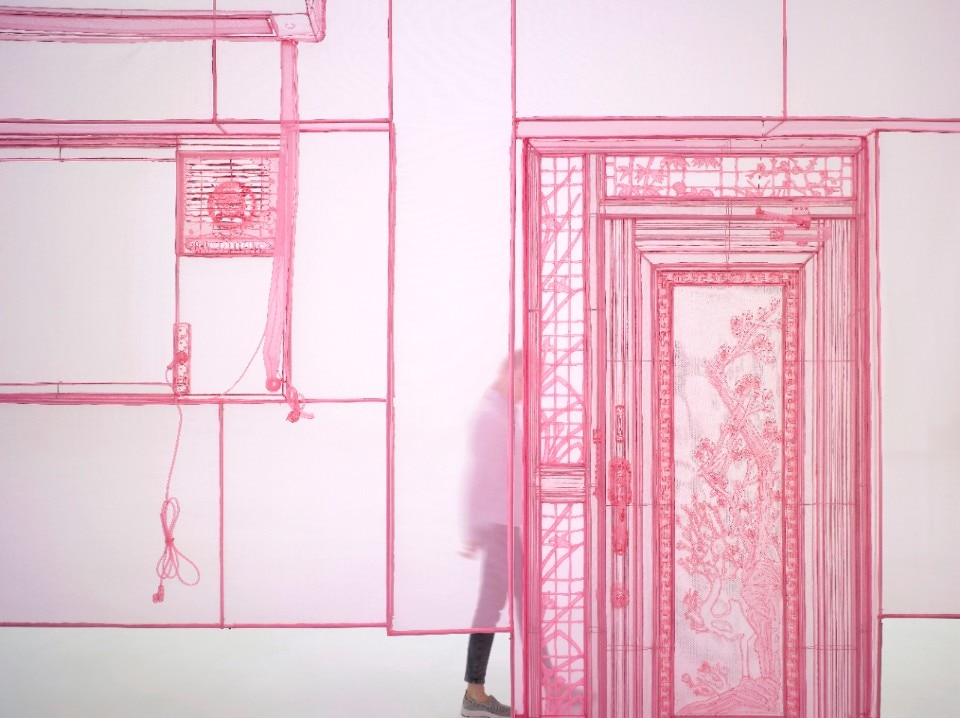
Architetture impossibili
Since 2016, Suh has lived and worked in London, a metropolis where housing pressure and precarious living conditions have become central issues in public debate. Beginning in 2010, the city experienced a surge in luxury residential developments, growing spatial inequality, and the gradual erosion of public spaces. In this increasingly inaccessible urban landscape, Suh’s “impossible homes” — transparent, light, intimate — function as devices of memory, but also as silent critiques of the dominant paradigm of dwelling.
“Fifteen years ago, London became my home city. Tate Modern is the museum I have spent the most time in since being here, it's the museum my children have grown up visiting, so this exhibition is particularly special to me,” the artist shares.
It is in this context that his “homes” become more layered and hybrid. "Perfect Home: London, Horsham, New York, Berlin, Providence, Seoul" (2024) is a composition of architectural fragments taken from different dwellings, stitched together into a single translucent space. Created with extreme precision but assembled according to a principle of chance, the work evokes an idea of home in constant flux. “If I wanted to get closer to the notion of the perfect home, I would have to embrace an element of chance,” Suh explains.
In these works, memory no longer unfolds in a linear way. “I’ve moved around so much in my life that the notion of home has become very complicated and cumulative. Although again, I want to stress that reflecting on voluntary movement is a privilege.”
In "Nest/s" (2024) — a long corridor sewn using Korean techniques and composed of spaces taken from homes in Seoul, London, New York, and Berlin — the transition between rooms happens seamlessly. One enters an architectural dream in which nostalgia materializes in the form of fabric and becomes space.
How would I overcome the violence and bureaucracy of borders?
Do Ho Suh
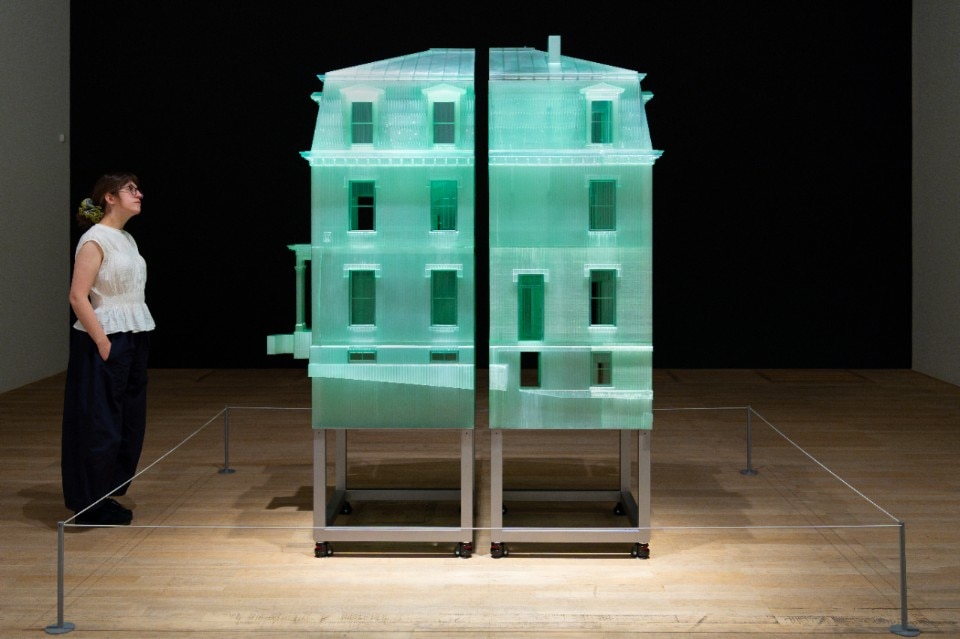
The perfect home
The intertwining of biography, reflections on dwelling, and the search for a new definition of home finds perhaps its most speculative — and political — expression in Bridge Project (begun in 1999), one of the exhibition’s most conceptually ambitious works. Suh imagines a bridge capable of connecting Seoul, New York, and London, the three cities he has lived in and called “home” at different points in his life. The exact location of this “perfect home” would be an unreal place: the Arctic Ocean.
“Currently, there are three different cities in my life that I call home – London, New York and Seoul – and if you triangulate the place that’s equidistant from all three, it’s right next to the North Pole.”
But Suh knows very well that this is a utopia. “I doubt the existence of a perfect home, but I think I’m still on that quest for it, the perfect world.” The bridge — and the house that would be built on it — thus become metaphors for a constant tension, an open-ended, never-resolved search. Dwelling, for Suh, is a practice in motion, not a fixed state: a construction that shifts, adapts, dreams.
Sources: Tate Modern; “Home Sweet Home: Janice Kerbel talks to Do Ho Suh,” interview published on the occasion of the exhibition.
- Exhibition:
- The Genesis Exhibition: Do Ho Suh: Walk the House
- Place:
- Tate Modern, London
- Dates:
- until October 19, 2025


